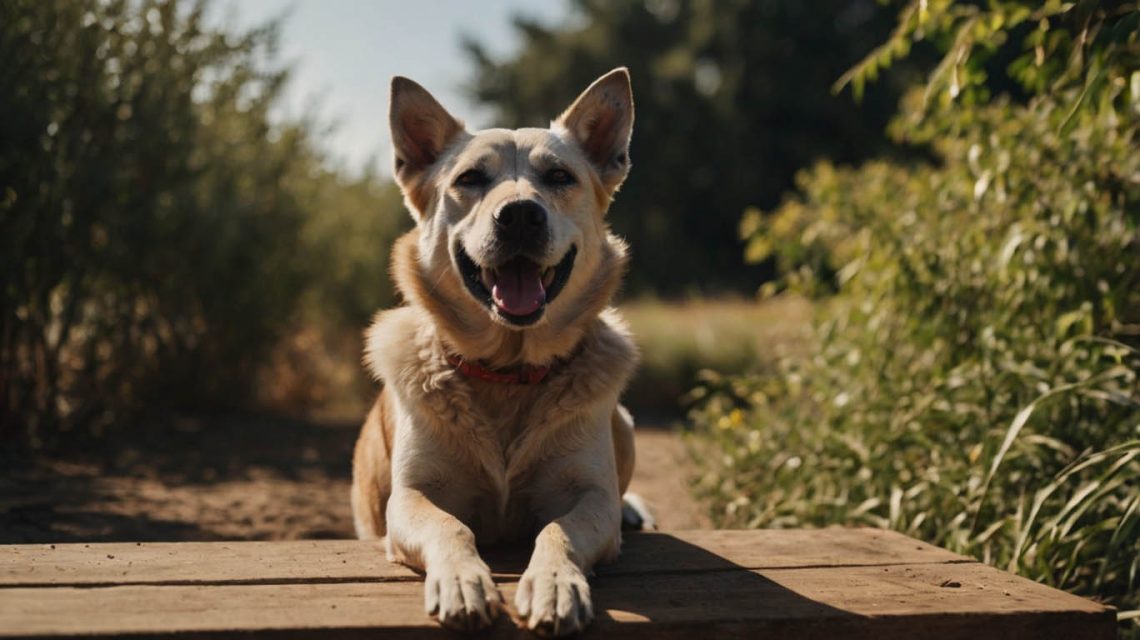Dog Heat Stress Signs: The Ultimate Guide to Keeping Your Canine Cool and Safe
The sun is shining, the birds are singing, and your dog is joyfully chasing a ball in the park. It’s a perfect summer day. However, amid this idyllic scene lies a hidden danger that every responsible pet owner must understand: heat stress. Recognizing the early dog heat stress signs is not just helpful knowledge; it is a critical skill that can prevent a medical emergency and ultimately save your furry companion’s life. As temperatures rise, a dog’s natural cooling mechanisms can become overwhelmed, leading to a dangerous condition that can escalate rapidly.
This comprehensive guide will walk you through the entire storyline of heat stress in dogs. We will start by identifying the subtle early warnings, progress to the more severe signs of heatstroke, and, most importantly, provide you with actionable strategies for prevention and immediate first aid. Consequently, you will be fully equipped to protect your pet when the weather gets warm.
Why Recognizing Dog Heat Stress Signs is Crucial
Before we dive into the specific symptoms, it’s essential to understand why this topic is so critical. Unlike humans who have sweat glands all over their bodies, dogs primarily cool themselves through panting and by releasing heat through their paw pads and nose. This system is significantly less efficient, making them highly susceptible to overheating.
When a dog’s body temperature rises to a dangerous level (a condition known as hyperthermia), it can trigger a cascade of disastrous events. For instance, severe heat stress can lead to heatstroke, which can cause:
- Widespread organ damage (kidneys, liver, heart)
- Brain swelling
- Blood clotting issues
- And, tragically, death.
Therefore, your ability to spot the initial dog heat stress signs and intervene immediately is the most important factor in ensuring a positive outcome. The transition from mild heat stress to a life-threatening emergency can happen in a matter of minutes.

Early Dog Heat Stress Signs You Can’t Ignore
The first stage of overheating presents with symptoms that can be subtle. Being vigilant and knowing what to look for allows you to take action before the situation becomes severe. These are the most common early dog heat stress signs.
Optimizing Your Awareness of Excessive Panting and Drooling
Panting is normal, but heat stress panting is different. It is more intense, rapid, and frantic than your dog’s typical post-exercise panting. In addition, you may notice thick, sticky, and excessive drool. This is because your dog is working overtime to expel heat, and their body is struggling to keep up. Pay close attention if their panting doesn’t subside after they’ve rested in a cool spot for a few minutes.
Using Your Eyes to Spot Changes in Gum and Tongue Color
A healthy dog’s gums are typically a bubblegum pink. One of the clearest early dog heat stress signs is a change in this color. As a dog overheats, their gums and tongue may become a bright or dark red. This is due to the body trying to push more blood to the extremities to cool down. You can check this by gently lifting their lip.
Tracking Restlessness and Pacing as Dog Heat Stress Signs
A dog suffering from heat stress will often find it difficult to settle down. They might pace back and forth, repeatedly get up and lie down, or seem generally anxious. This restlessness is a sign of discomfort; essentially, their body is telling them something is wrong, and they are trying to find a way to get comfortable and cool down.
Advanced Dog Heat Stress Signs (Heatstroke Emergency)
If the early signs are missed or ignored, a dog can quickly progress to the advanced stages of heat stress, which is a full-blown heatstroke emergency. If you observe any of the following symptoms, it is a sign of a dire situation requiring immediate veterinary intervention.
Identifying Stumbling, Dizziness, or Disorientation
As heatstroke affects the brain, you may see neurological symptoms. Your dog might seem dizzy, uncoordinated, or confused. They may stumble as they walk (a condition called ataxia) or fail to respond to your commands. This is a clear indicator that the overheating is impacting their central nervous system, and it is a critical dog heat stress sign.
Recognizing Vomiting and Diarrhea as Alarming Signs
Severe heat stress puts immense strain on the gastrointestinal tract and other internal organs. As a result, your dog may begin to vomit or have diarrhea, which can sometimes contain blood. This symptom signals that significant internal damage may be occurring.
Understanding the Danger of Lethargy or Collapse
This is one of the most severe dog heat stress signs. The dog may become extremely weak, unresponsive, and unwilling or unable to move. They may lie down and refuse to get up, or they could collapse suddenly. In the most extreme cases, this can be followed by seizures or a coma. At this stage, a fatal outcome is highly likely without immediate and aggressive veterinary care. For more information on emergencies, the American Veterinary Medical Association (AVMA) provides excellent first-aid resources.

Which Dogs Face a Higher Risk of Heat Stress?
While any dog can suffer from heat stress, certain breeds and conditions increase the risk factor significantly.
- Brachycephalic (Flat-Faced) Breeds: Bulldogs, Pugs, Boxers, and Shih Tzus have compromised respiratory systems that make panting less effective.
- Puppies and Senior Dogs: Their bodies cannot regulate temperature as efficiently as healthy adult dogs.
- Overweight or Obese Dogs: Excess fat acts as insulation, trapping heat.
- Thick-Coated Breeds: Dogs like Huskies, Malamutes, and Newfoundlands are built for cold weather, not hot climates.
- Dogs with Medical Conditions: Heart problems, laryngeal paralysis, or respiratory issues can severely impair a dog’s ability to cool down.
Top Strategies to Prevent Dog Heat Stress
Prevention is always the best medicine. Implementing these best practices will drastically reduce the chances of your dog ever experiencing dangerous overheating.
- Never, Ever Leave Your Dog in a Car: Even on a mild day with the windows cracked, the temperature inside a car can skyrocket to lethal levels in just minutes.
- Provide Constant Access to Shade and Fresh Water: When outdoors, ensure there is always a shady spot to rest and a full bowl of cool water. Consider adding ice cubes to their water bowl.
- Time Your Walks Strategically: Avoid exercising your dog during the hottest parts of the day (typically 10 a.m. to 4 p.m.). Opt for early morning or late evening walks instead.
- Check the Pavement Temperature: Hot asphalt can burn your dog’s paw pads and radiates heat upwards. Place the back of your hand on the pavement for five seconds; if it’s too hot for you, it’s too hot for them.
- Invest in Cooling Products: Cooling vests, mats, and bandanas can be highly effective tools for keeping your dog comfortable. For more tips, explore our guide on [Summer Safety Tips for Your Pet].
- Know Your Dog’s Limits: Pay attention to your dog’s energy levels. If they seem tired or are panting heavily, it’s time to stop the activity and get them into a cool environment.
Immediate Steps for Suspected Dog Heat Stress
If you suspect your dog is showing dog heat stress signs, you must act immediately. Time is of the essence.
- Move to a Cool Area Immediately: Bring your dog indoors to an air-conditioned space or into a shady, breezy area.
- Apply Cool Water (Not Ice-Cold): Use a hose, wet towels, or a sponge to apply cool—not ice-cold—water to their body. Focus on the paws, groin, and neck, where major blood vessels are close to the skin. Using water that is too cold can cause blood vessels to constrict, which paradoxically slows down the cooling process.
- Use a Fan: Point a fan at your dog as you apply the water. The evaporative effect will help cool them down much faster.
- Offer Small Sips of Water: If your dog is conscious and able to drink, offer them small amounts of cool water. Do not force them to drink, as they could aspirate it into their lungs.
- Call Your Vet Immediately: This step is non-negotiable. Even if your dog seems to be recovering, they need to be seen by a veterinarian. A vet can check for signs of organ damage and provide essential treatments like intravenous fluids. They are your most reliable source of help.
Your Vigilance is Their Best Defense
Understanding and quickly identifying dog heat stress signs is a fundamental responsibility of pet ownership. By knowing the difference between normal panting and distressed panting, recognizing the danger of red gums, and understanding the urgent threat of disorientation or collapse, you are creating a powerful safety net for your beloved pet.
Remember the story: from early, subtle signs to advanced, life-threatening symptoms, the progression of heat stress can be terrifyingly fast. But armed with knowledge and a proactive prevention plan, you can ensure that your sunny days together are filled only with happy memories, not emergencies.


